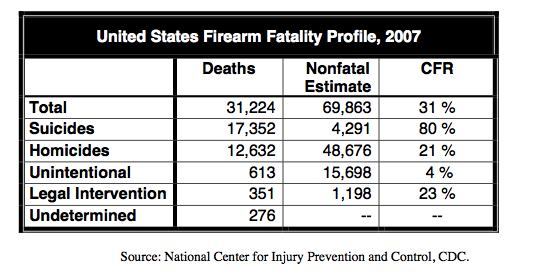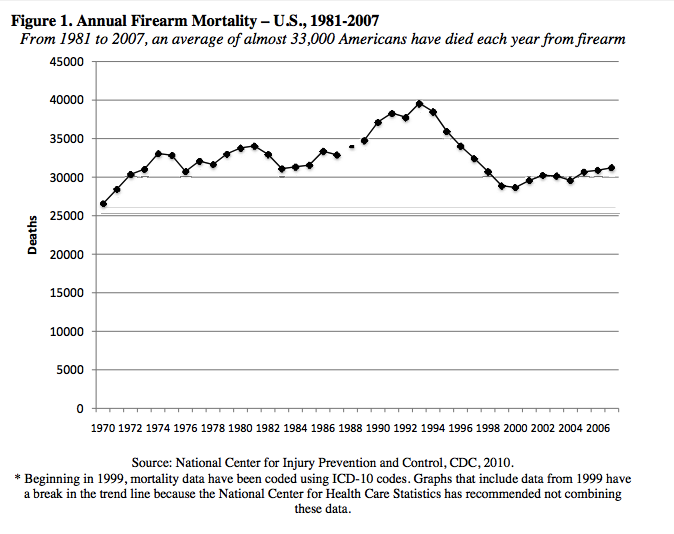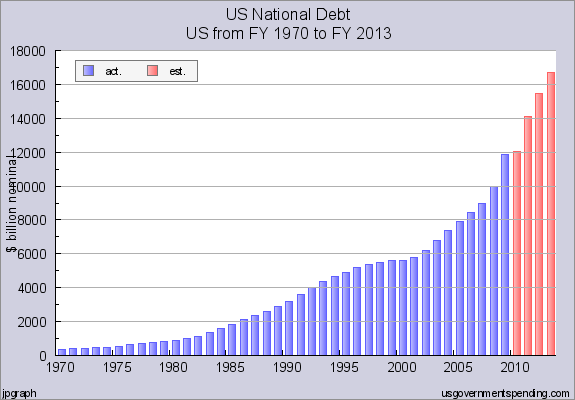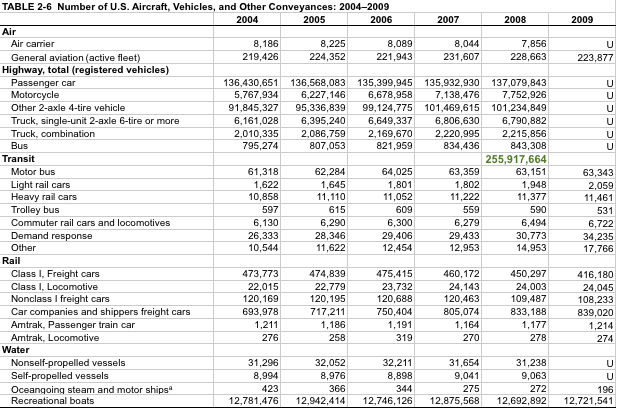
It’s For Your Health
A recent article on Fox News led off with this little tidbit:
In the near future, Americans who own or want guns likely will be subject to rafts of new questions from social scientists, medical researchers and law enforcement officials intent to discover just what guns they own, why they own them and what they intend to use them for — not to mention where and how they keep them.
“What” you ask, “is this referring to?”
Don’t worry, it’s for your own good. The President, in his infinite wisdom, has decided to use the Center For Disease Control as another tool in his arsenal to mold public opinion.  The White House ordered a CDC study as one of 23 executive actions he dictated in January.
What is this study supposed to accomplish?
The agenda, which aims to sidestep Second Amendment political and constitutional issues of gun ownership through its public health focus, was released earlier this month in a 124-page report titled, “Priorities for Research to Reduce the Threat of Firearms Related Violence.†It was sponsored by the Centers for Disease Control (CDC) with financial support from private foundations.
But don’t worry, it’s going to be “value-neutral.” Right.
The research study has also drawn skeptics, who wonder whether the amount of data that the CDC study suggests collecting might not amount to a gun registry—opposed by many on Second Amendment grounds — by backdoor means.
Not this administration, they’d never do such a thing. They’d never use the power of a federal agency to further a political agenda.
Others have a skeptical attitude. “There is nothing in there directly about a gun registry, but there is obviously plenty that could be used toward that end if one wanted to,†says Ted Bromund, an arms trade expert at the conservative Heritage Foundation.  “I don’t see how one can regret the lack of a single database on gun owners, as the study does, without seeing the possibility of making the case that we need a national gun registry.â€
What a silly thought.
They don’t have a moment to lose. Eager to capitalize on the deaths of school children, slaughtered movie-goers in Aurora, and the Gabby Giffords shooting, the Obama administration is determined to shove this through, regardless of technical details like Congress’s adamant refusal to fund such transparent, agenda-driven research.
The crash schedule and high-speed publication was intended to break through what Leshner described to Fox News as a 17-year congressional ban on such CDC research, but it was also clearly intended to promote near-term action by “people who want answers in a systematic, rapid way.â€Â
Much will depend on whether the money flows to make sure that the high-priority research actually gets under way. In hailing the study, the CDC told Fox News that it “does not currently have dedicated funding to conduct this research.†For its part, the Obama administration has called for Congress to approve $10 million to get the research ball rolling. Whether that will happen is open to question.
That may leave private foundations — a number of which have prominently supported gun control research efforts in the past — to carry the burden — which in turn may affect which priorities get satisfied first.
One would think that we are seeing an explosion in gun violence of epidemic proportions. However, the numbers tell a different story. According to the CDC the rate has been pretty flat since way back in 1970. In order to show some kind of a problem they went back 40 years as opposed to the usual cherry picking of data. Nevertheless, note that the chart says “1981 -2007” but shows 1970 – 2007.
Compare this chart to that of the growth of the national debt.
Now, that is a chart that shows an ever-increasing catastrophe.
The purpose of showing both of these charts is not to make light of the tragedy implied by deaths caused by firearms, but to make the argument for looking at matters objectively, rather than emotionally. We see just as many car fatalities every year and about 10 times as many injuries. And while tragic, this is not viewed as a national emergency, meriting a score of executive orders.
The purported premise of this study is to reduce gun violence. While some gullible, well-intentioned people might actually believe that, the real purpose is to link gun-ownership with mental illness and disease and thereby continue to mold public opinion in the desired (by this administration and its adherents) direction.
But putting aside the obvious thinly-hidden agenda behind this study, let’s look at a few numbers see how big a problem this really is. In the opening paragraph of the document released in early June (for your convenience – download here), the magnitude (or lack thereof) of the problem is highlighted.
Individuals use firearms legally for a variety of activities, including recreation, self-protection, and work. However, firearms can also be used to intimidate, coerce, or carry out threats of violence. Fatal and nonfatal firearm violence poses a serious threat to the safety and welfare of the American public. Although violent crime rates have declined in recent years, the U.S. rate of firearm-related deaths is the highest among industrialized countries. In 2010, incidents in the U.S. involving firearms injured or killed more than 105,000 Americans, of which there were twice as many nonfatal firearm-related injuries (73,505) than deaths. Nonfatal violence often has significant physical and psychological impacts, including psychological outcomes for those in proximity to individuals who are actually injured and die from gun violence. The recent, highly publicized, tragic mass shootings in Newtown, Connecticut; Aurora, Colorado; Oak Creek, Wisconsin; and Tucson, Arizona, have sharpened the public’s interest in protecting our children and communities from the effects of firearm violence.
If we ignore the contorted English and read carefully, we can do some elementary math to see what this actually says. 105,000 injured or killed. Of these 73,505 were injuries rather than fatalities.  This means that there were 31,495 deaths attributed to either violence, accident, or suicide. (note the lack of distinction and clever phraseology here, the casual reader would naturally assume that all of these deaths and injuries were due to intentional acts of violence against innocent victims.) To be sure, this is a lot of people. But let’s try to be objective for just a moment.
Breaking the numbers down a little further, we can see from this resource book published by the University of Pennsylvania, a certain amount of self-selection.

More than half the fatalities from firearms were suicides. While sad, it’s hard to categorize these as tragic as the well-publicized, but incredibly rare instances of violence like that at Sandy Hook.
There is also a cultural component to the numbers that no one likes to talk about.
Perhaps we are focused on the wrong aspects of the problem. As Thomas Sowell points out, “non-white males had a declining murder rate” prior to the rulings of the Warren court. ” Sowell cites “reduced law enforcement and intellectuals making excuses for criminals” as responsible “for the soaring crime rates that followed the liberal nostrums of the 1960s. … Does anyone seriously believe that excuse-making and counterproductive policies on crime are a favor to black communities?”
Similarly, if the gun controllers were really concerned about loss of life and personal injuries they could consider comparison data of fatalities and injuries from automobiles.
According to the National Highway Traffic Safety Administration, the following automobile accidents wreaked the following havoc on the nation in 2009 and 2010.
| Automobile Related Deaths and Injuries | ||
|---|---|---|
| 2010 | 2009 | |
| Fatalities | 32,885 | 33,883 |
| Injuries | 2,239,000 | 2,217,000 |
| Firearms Related Deaths and Injuries | ||
|---|---|---|
| 2010 | 2009 | |
| Fatalities | 31,495 | 31,347 |
| Injuries | 73,505 | 66,769 |
A 2010 CDC study found:
In a one-year period, the cost of medical care and productivity losses associated with injuries from motor vehicle crashes exceeded $99 billion – with the cost of direct medical care accounting for $17 billion, according to a study by the Centers for Disease Control and Prevention. The total annual cost amounts to nearly $500 for each licensed driver in the United States, said the study in the journal Traffic Injury Prevention.
Additionally,
Costs related to fatal motor vehicle-related injuries totaled $58 billion. The cost of non-fatal injuries resulting in hospitalization amounted to $28 billion, and the cost of injuries to people treated in emergency departments and released was $14 billion.
Note that these figures don’t account for the costs associated with property damage.
Americans own an estimated 270 million firearms – approximately 90 guns for every 100 people. (This does not include firearms owned by law enforcement and US military forces. Reliable figures on that are difficult to find.)
That’s about the same number of cars on the road. Makes the furor over guns look as phoney as it is.




 The posts are coming!
The posts are coming!

0 comments
Kick things off by filling out the form below.
Leave a Comment